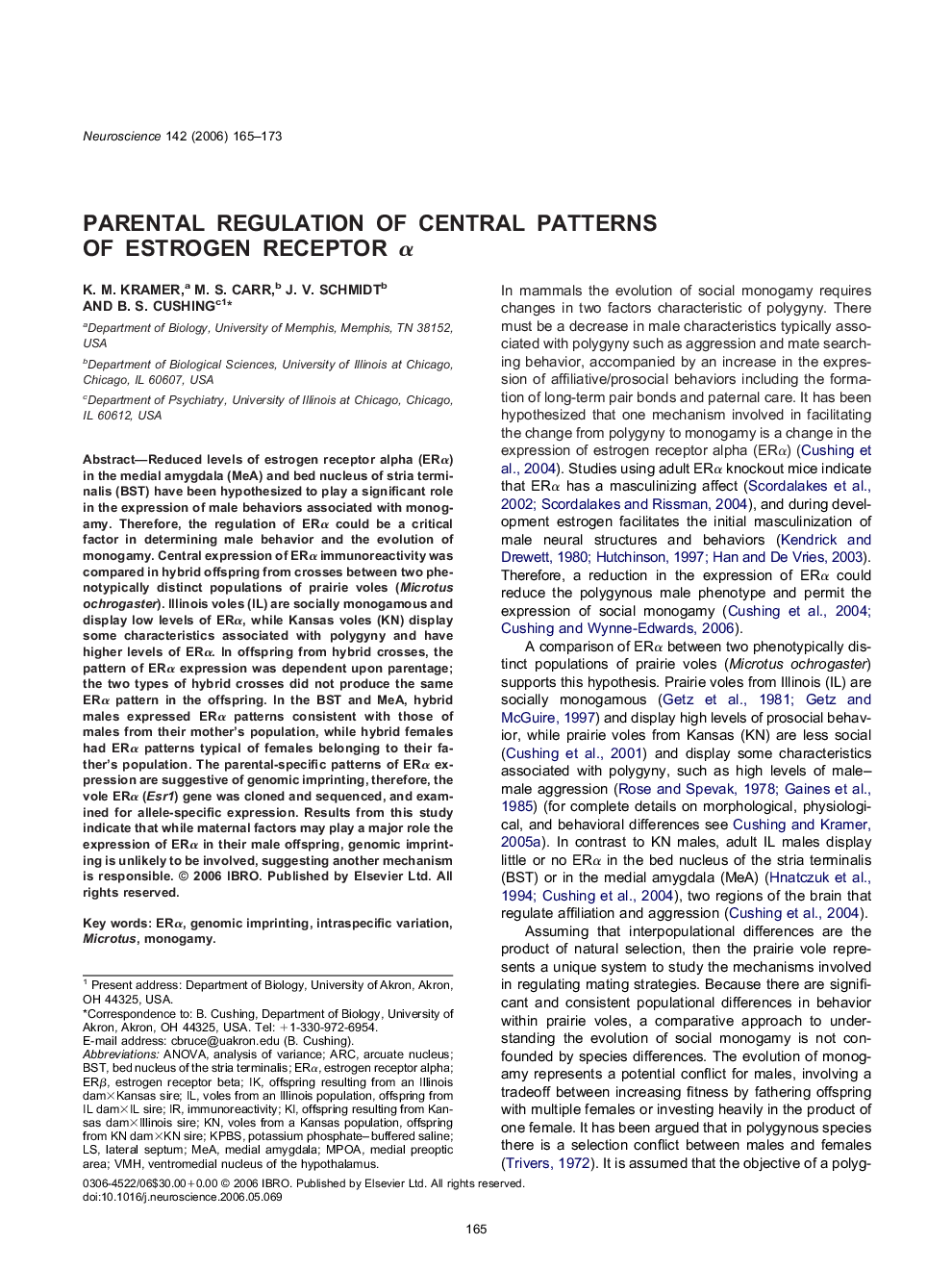| Article ID | Journal | Published Year | Pages | File Type |
|---|---|---|---|---|
| 4342450 | Neuroscience | 2006 | 9 Pages |
Reduced levels of estrogen receptor alpha (ERα) in the medial amygdala (MeA) and bed nucleus of stria terminalis (BST) have been hypothesized to play a significant role in the expression of male behaviors associated with monogamy. Therefore, the regulation of ERα could be a critical factor in determining male behavior and the evolution of monogamy. Central expression of ERα immunoreactivity was compared in hybrid offspring from crosses between two phenotypically distinct populations of prairie voles (Microtus ochrogaster). Illinois voles (IL) are socially monogamous and display low levels of ERα, while Kansas voles (KN) display some characteristics associated with polygyny and have higher levels of ERα. In offspring from hybrid crosses, the pattern of ERα expression was dependent upon parentage; the two types of hybrid crosses did not produce the same ERα pattern in the offspring. In the BST and MeA, hybrid males expressed ERα patterns consistent with those of males from their mother’s population, while hybrid females had ERα patterns typical of females belonging to their father’s population. The parental-specific patterns of ERα expression are suggestive of genomic imprinting, therefore, the vole ERα (Esr1) gene was cloned and sequenced, and examined for allele-specific expression. Results from this study indicate that while maternal factors may play a major role the expression of ERα in their male offspring, genomic imprinting is unlikely to be involved, suggesting another mechanism is responsible.
